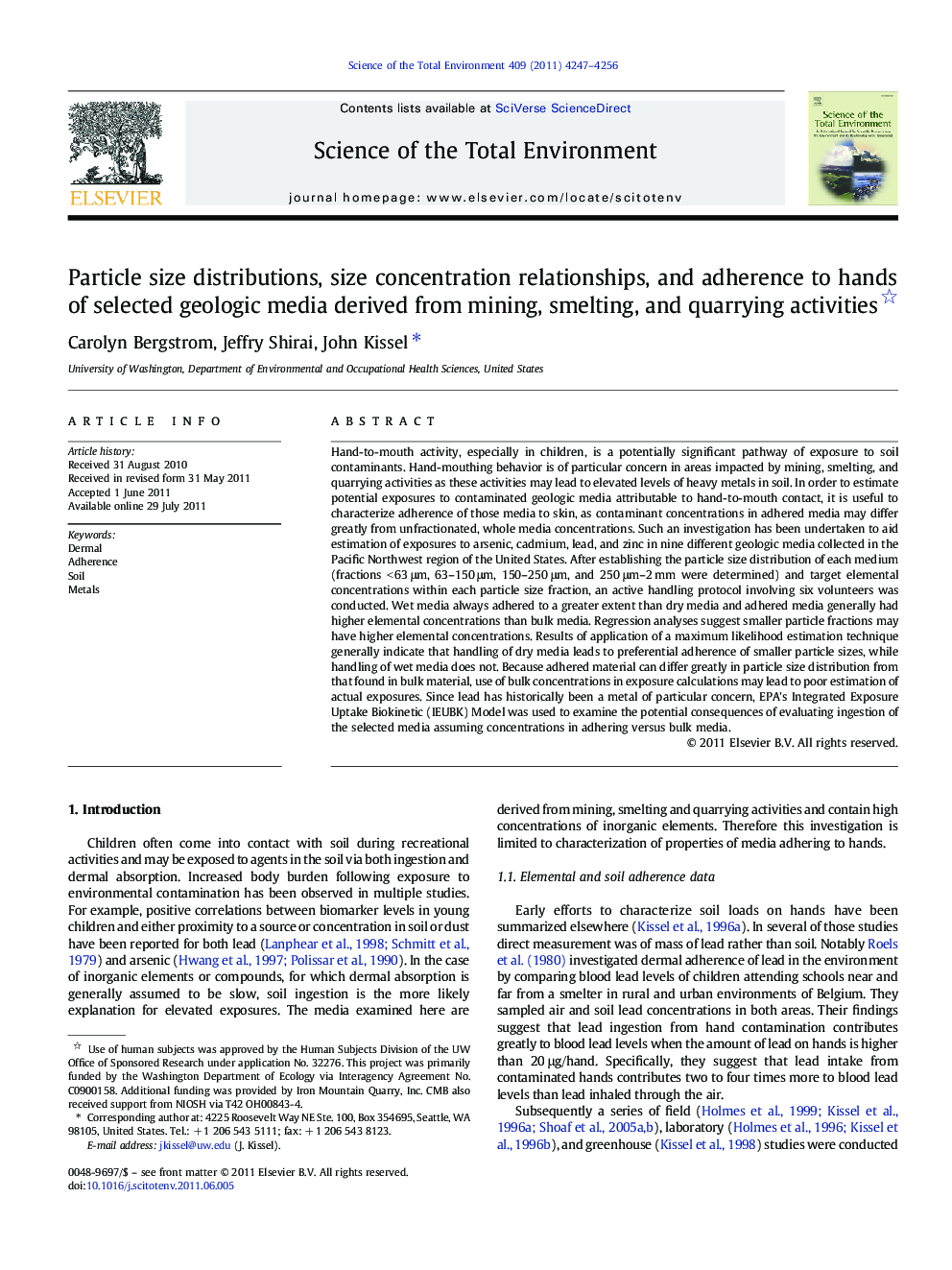| کد مقاله | کد نشریه | سال انتشار | مقاله انگلیسی | نسخه تمام متن |
|---|---|---|---|---|
| 4429916 | 1619842 | 2011 | 10 صفحه PDF | دانلود رایگان |

Hand-to-mouth activity, especially in children, is a potentially significant pathway of exposure to soil contaminants. Hand-mouthing behavior is of particular concern in areas impacted by mining, smelting, and quarrying activities as these activities may lead to elevated levels of heavy metals in soil. In order to estimate potential exposures to contaminated geologic media attributable to hand-to-mouth contact, it is useful to characterize adherence of those media to skin, as contaminant concentrations in adhered media may differ greatly from unfractionated, whole media concentrations. Such an investigation has been undertaken to aid estimation of exposures to arsenic, cadmium, lead, and zinc in nine different geologic media collected in the Pacific Northwest region of the United States. After establishing the particle size distribution of each medium (fractions < 63 μm, 63–150 μm, 150–250 μm, and 250 μm–2 mm were determined) and target elemental concentrations within each particle size fraction, an active handling protocol involving six volunteers was conducted. Wet media always adhered to a greater extent than dry media and adhered media generally had higher elemental concentrations than bulk media. Regression analyses suggest smaller particle fractions may have higher elemental concentrations. Results of application of a maximum likelihood estimation technique generally indicate that handling of dry media leads to preferential adherence of smaller particle sizes, while handling of wet media does not. Because adhered material can differ greatly in particle size distribution from that found in bulk material, use of bulk concentrations in exposure calculations may lead to poor estimation of actual exposures. Since lead has historically been a metal of particular concern, EPA's Integrated Exposure Uptake Biokinetic (IEUBK) Model was used to examine the potential consequences of evaluating ingestion of the selected media assuming concentrations in adhering versus bulk media.
► Hand-adherence was investigated in geological media derived from mining, smelting, and quarrying activities.
► Media were analyzed for arsenic, cadmium, lead, and zinc.
► Wet media always adhered to a greater extent than dry media.
► Handling of dry media generally led to preferential adherence of smaller particle sizes, handling of wet media did not.
► Adhered media generally had higher elemental concentrations than bulk media.
Journal: Science of The Total Environment - Volume 409, Issue 20, 15 September 2011, Pages 4247–4256